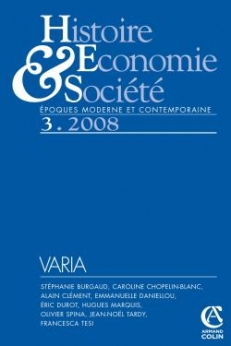
Histoire, économie & société (3/2008)
Pour acheter ce numéro, contactez-nous
Recevez les numéros de l'année en cours et accédez à l'intégralité des articles en ligne.
Si la conception traditionnelle du pauvre, figure du Christ, est encore présente au XVIII e siècle, en particulier chez les penseurs ecclésiastiques à l’instar de l’évêque constitutionnel Adrien Lamourette, elle tend à évoluer. Nicolas Baudeau, abbé de Chancelade et philosophe converti à la physiocratie, partage l’idée que la pauvreté est contraire à la loi naturelle et constitue un obstacle au bonheur. Ces deux ecclésiastiques se retrouvent pour considérer que la pauvreté est avant tout un problème social ; ils préconisent, selon un plan plus ou moins bien établi, la prise en charge de la pauvreté par l’État.
The traditional conception of the poor, figure of Christ, is still present during XVIII th century, particularly among the ecclesiastical thinkers, following the example of the constitutional bishop Adrien Lamourette ; but this conception changes. Nicolas Baudeau, abbot of Chancelade and philosopher converted to the physiocratic ideas shares the idea that poverty is in opposition to natural law and constitutes an obstacle to happiness. These Ecclesiastes consider that poverty is first a social problem ; they recommend the taking care of poverty by the State.

